Berlin, the capital of Germany, is a city that combines a rich historical past with a vibrant, contemporary culture. With its significant role in global history, Berlin possesses diverse heritages as shown by various attractions. Examples include the Brandenburg Gate, Berlin Wall and Reichstag Building. Besides, its arts scene is thriving while neighborhoods are eclectic and nightlife dynamic. You can also go through or visit Museum Island’s past or spend time in Tiergarten enjoying the changing seasons or partaking in culinary delights at one of many bustling markets scattered around this city; there is something for everyone here thus making it an ideal place for people who want to see both sides of history and modern life.
Map
Brandenburg Gate
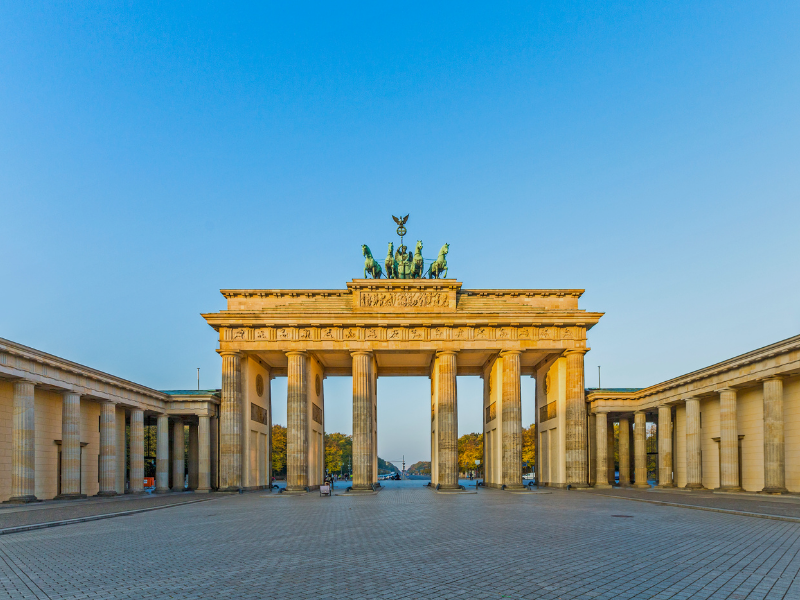
The Brandenburg Gate is an emblematic figure of the history and integration of Berlin, located at the heart of the city and observing numerous events such as the Napoleonic Wars or even the fall of the Berlin Wall. Constructed from 1788 to 1791 under Carl Gotthard Langhans’ design, it was commissioned by King Frederick William II as a model after Propylaea in Athens. It was first called The Gate of Peace which represents peace itself having six Doric columns forming five passageways.
Over time there have been many historical moments that took place here like when Napoleon marched through during his campaign against Prussia in 1806 or its use by Nazis as propaganda backdrops while they were still power. Because it was severely damaged during World War II leaving it within no man’s land throughout most parts Cold War made this gate one half signifying separation until 1989 when people tore down walls around it thereby making other become whole again.
Reichstag Building
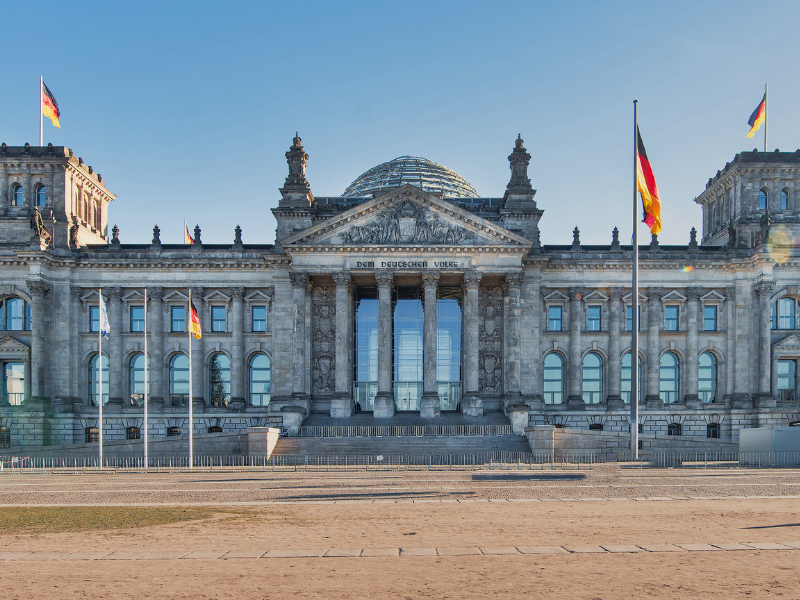
The Reichstag Building, a symbol of Germany’s history and lively democracy, stands in the heart of Berlin. Renaissance revival style with neoclassical architecture elements describe the design by Paul Wallot that was completed in 1894; it is characterized by its grand porch and Corinthian columns. After the fire in 1933, which caused catastrophic damage during World War II among other events of great significance happened there, the building was not used until post-war times when Berlin wall fell down leading to Germany’s unification in 1990 – this event gave new birth to its importance. Renovated and reopened for public visits since 1999, now it is home to German Bundestag representing another stage of democratic development where transparency became essential part.
When you get to Reichstag there are some architectural miracles waiting for you like famous glass dome designed by Sir Norman Foster that provides panoramic view over whole Berlin but also gives possibility see directly into parliament sitting beneath it too so as emphasize closeness between state organs and citizens.
Berlin Wall Memorial

The Berlin Wall Memorial is a strong sign of the human spirit’s resilience and yearning for freedom in the Cold War. On August 13, 1961 GDR (German Democratic Republic) built the Berlin Wall which divided Berlin both physically and ideologically into East and West representing worldwide communism-capitalism clash. This barrier was about 155 kilometers long. The fall of this wall on November 9th ,1989 became one of the most important events in history because it led to German reunification.
There are many things you can visit at the Berlin Wall Memorial that make its past come alive. It spans 1.4 kilometers of the former border strip, houses preserved sections of this fortified structure, contains a chapel called Chapel of Reconciliation, has Documentation Center where you can learn more about life behind bars under communist regime among other exhibits plus Window Of Remembrance which shows names those who died trying escape from East into West or vice versa.
Museum Island

Located in the middle of Berlin, Museum Island is a UNESCO World Heritage site and a cultural treasure trove which consists of five world famous museums. Founded by King Friedrich Wilhelm III in the early 19th century with the construction of Altes Museum designed by Karl Friedrich Schinkel in 1830, this area was transformed into a complex of museums during the following hundred years making it one of Europe’s most important centers for education and culture.
Every building on the island represents different architectural styles from neo-classical to modernist thus forming an integral part not only of German but also European architecture history as well as being one among many diverse pieces that create vibrant fabric which constitutes Berlin’s cultural landscape. Its recognition by UNESCO back in 1999 underlines its value both within local context – where it has always been seen as source for artistic inspiration and knowledge – but also worldwide since such recognition implies that there must be something truly extraordinary about this place.
These museums boast vast collections covering thousands years. In particular, among other things displayed here you can find classical antiquities in Altes Museum or Egyptian artefacts including famous bust of Nefertiti exhibited at Neues Museum. Alte Nationalgalerie houses artworks created during 19th century; Bode-Museum contains sculptures together with Byzantine art while monumental reconstructions like Pergamon Altar and Ishtar Gate are some examples representing what Pergamonmuseum offers to its visitors.
Checkpoint Charlie
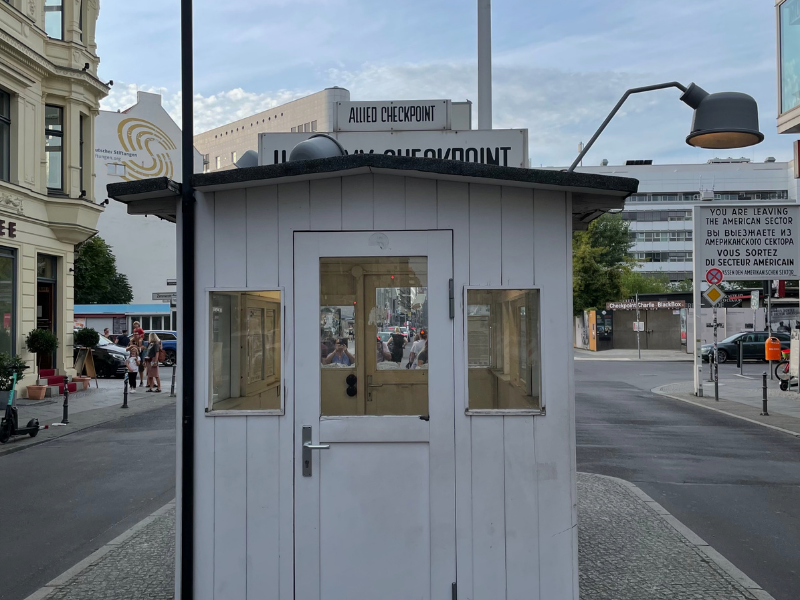
Checkpoint Charlie is a representation of Berlin’s Cold War history and remains the most striking evidence of the division that characterized the city. Placed by the Allied forces in 1961 on Friedrichstrasse, it was indeed one of East-West Berlin’s principal crossing points. Included third among several checkpoints and named after phonetic alphabet usage, the place became world famous during an international crisis in October 1961 when American tanks confronted Soviet ones at close quarters, nearly leading to direct conflict. Also, many East Germans risked their lives trying to escape across this border post into West Germany; thus underlining human sufferings caused by political separation.
Today Checkpoint Charlie serves as both museum and memorial where visitors can get a full picture of what life was like behind The Wall during those years when Europe remained divided along ideological lines. Founded in 1962, Checkpoint Charlie Museum displays various escape methods along with historical photographs pertaining to them as well as items from that era. Moreover, replica guardhouse together with well-known “You are leaving American sector” sign create necessary historic ambiance.
Memorial to the Murdered Jews of Europe
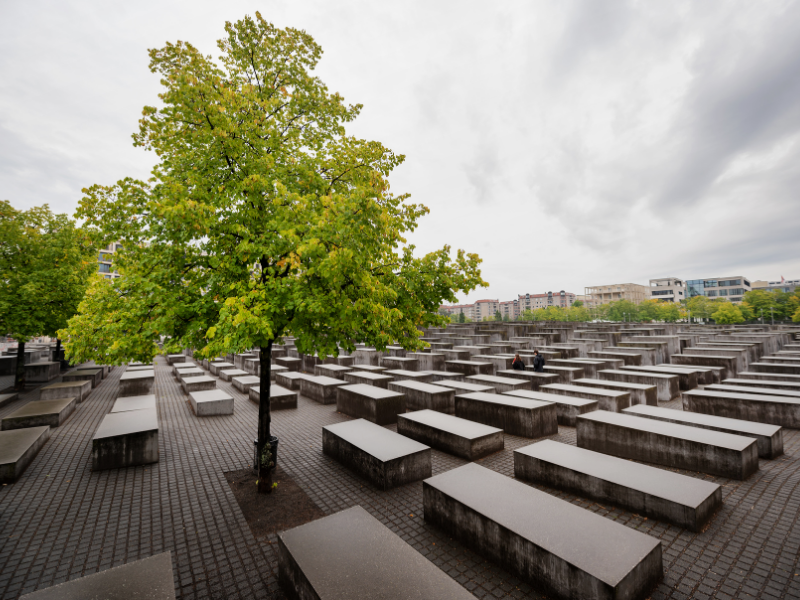
The Holocaust Memorial, or the Memorial to the Murdered Jews of Europe as it is officially called, stands right at the center of Berlin. It was built to remember the six million Jews who died during World War II. It was opened in 2005 and was designed by American architect Peter Eisenman with German journalist Lea Rosh serving as its initiator.
The monument consists of 2,711 concrete slabs which are arranged in a grid pattern on an inclined plane thereby creating an undulating landscape that gives an impression of perplexity and disorientation similar to what victims experienced under Nazi regime. This simple yet thought-provoking design allows people visiting this place approach it at individual level contemplating upon such tremendous human loss brought about by Second World War crimes against humanity.
Below this sea of steles one can find Information Centre where he/she may get acquainted with historical background information related to Holocaust while also listening personal accounts concerning various individuals who suffered from these events themselves. Among different displays presented in thematic rooms there are such exhibitions like “Room of Dimensions” displaying original letters together with diary entries written by particular people during their stay either at ghettoes or concentration camps; moreover there exists another hall called “Room Names” where names biographies continuously being mentioned out loud thus enabling visitors gain insight into lives those killed during Shoah.
Charlottenburg Palace
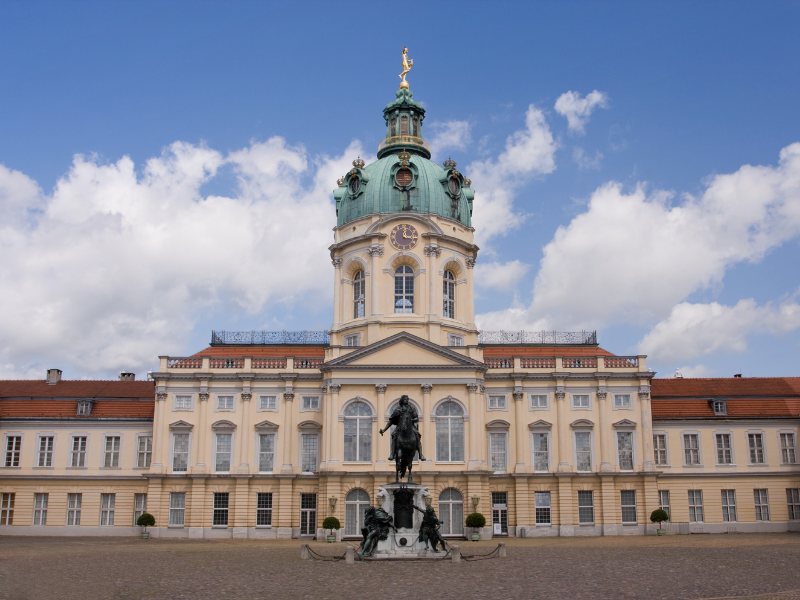
The largest palace in Berlin, Charlottenburg Palace embodies the Prussian monarchy’s greatness. It was built in the 17th century as a small summer house for Elector Frederick III’s wife, Sophie Charlotte, before it was transformed into an impressive Baroque wonder. Renamed Charlottenburg after her death, this palace includes Rococo and Neoclassical features that were added during later renovations. Many royal ceremonies and events took place at this residence of the Prussian royal family which served as their main home. Despite being damaged in World War II, it has been carefully reconstructed, representing both Berlin’s ability to recover from adversity and its regal past.
Tourists can visit opulent state apartments at Charlottenburg Palace along with the dazzling Porcelain Cabinet and New Wing featuring Rococo ballroom as well as Frederick the Great’s private chambers. The palace chapel is also worth seeing while its vast gardens represent both Baroque style and English landscape design thus making them even more attractive for visitors. Moreover, there are historical sites like Belvedere pavilion or Mausoleum within the palace grounds which deepen one’s understanding of history during such visits.
Berlin Cathedral

Berlin Cathedral, or Berliner Dom, is a historical and architectural discovery located at the center of Berlin. Being the biggest church in the city, its magnificent Neo-Renaissance style and long history attract many people. It was first constructed as a parish church in the 15th century but what we see now is an enormous building commissioned by Kaiser Wilhelm II from Julius Carl Raschdorff between 1894 and 1905; this Protestant counterpart to St Peter’s Basilica represents both Prussian monarchy power and protestantism.
Located strategically on Museum Island, it was aimed to be one of those places which would make Berlin more cultural and spiritual. Despite being almost completely destroyed during World War II, it has been restored with great attention to details so that it still stands today as an example for how things can go through hard times but come out even stronger.
In terms of architecture, Baroque influenced Neo Renaissance describes best what Berlin Cathedral looks like from outside: magnificent facade with lots of sculptures here and there plus highest among all domes crowning them up; inside – wide nave full of light thanks to numerous stained glass windows along both walls; beautifully decorated altar screen behind which stands main altar made up mostly from marble pieces collected over centuries… but these are only few highlights among many others. One should not miss opportunity climbing atop central dome (which itself provides excellent view) because panorama over entire city will literally take their breath away.
Tiergarten
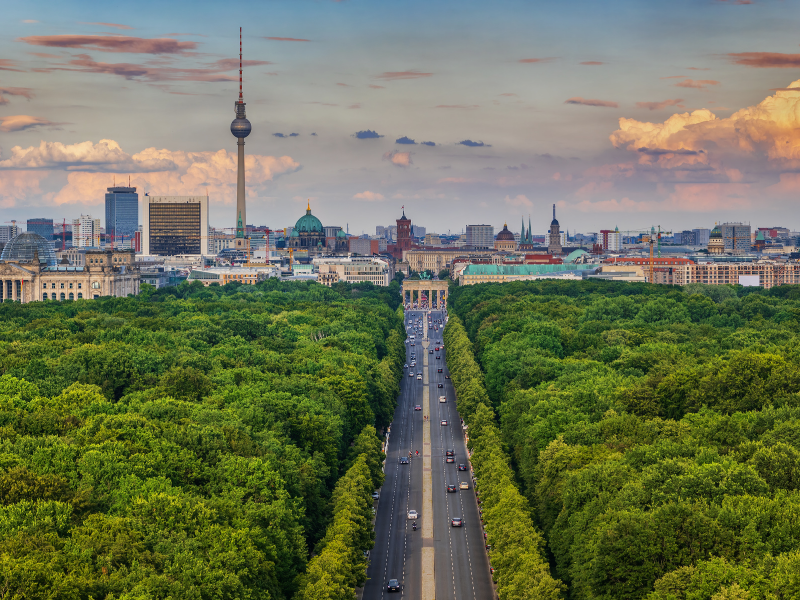
Berlin’s largest and oldest public park is Tiergarten. It is a place of greenery in the heart of the city, away from its bustle. The hunting ground for the Prussian royal family was established by Elector Joachim II in the 16th century. Frederick the Great turned it into a public park in the 18th century and landscaped it with English-style gardens and paths, which were later redesigned by Peter Joseph Lenné so that people could enjoy them too.
Over time, many things happened to Tiergarten – it suffered heavy damage during World War II and was used for agriculture after that. But it was restored in the 1950s as an embodiment of Berlin’s ability to bounce back and its commitment to green spaces.
In this beautiful park, you can visit such landmarks as the Victory Column where you can have a panoramic view on Berlin or Berlin Zoo – one of the world’s oldest and most famous zoos. Bellevue Palace is situated not far from here – this official residence belongs to German President; also Brandenburg Gate – one of unforgettable symbols of Berlin lies near these places too adding historical value for every visitor who comes here. There are lots of well-tended gardens, lakes and other natural spruce-ups scattered across those 520 acres which make up this wonderful green zone perfect for leisurely strolls, boat trips or just picnics somewhere nearby picturesque landscapes provided by Mother Nature herself.
Alexanderplatz
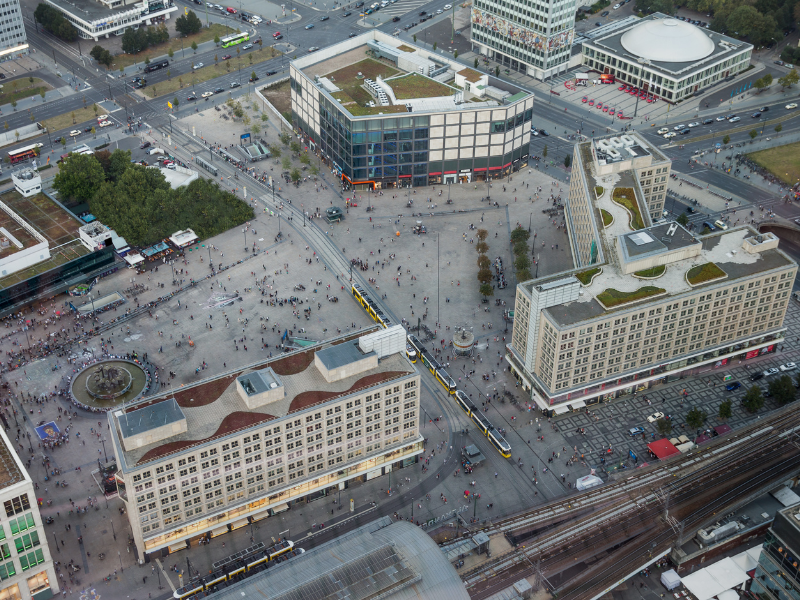
In the local tongue, Alexanderplatz is referred to as “Alex”. It is one of Berlin’s most lively and historically rich squares. The square, found in the center of Berlin, serves as a busy area for shopping, eating, transport and culture. This square was named after Tsar Alexander I of Russia; it has transformed from a 19th century cattle market and parade ground into an important city hub.
During the 20th century, many significant political events and peaceful demonstrations took place at Alexanderplatz including some that led to the fall of the Berlin Wall in 1989 which were significant in Berlin’s history. Today this historical site blends with modern infrastructure representing continuous growth and adaptation within Berlin.
Among its key attractions is Berlin TV Tower where visitors can have breathtaking views over all parts of the city from its revolving restaurant located on an observation deck high up above ground level. Another attraction popular among people who meet there is World Clock (Urania-Weltzeituhr), showing different times around our planet simultaneously.
Other interesting places include Neptune Fountain – a historic sculpture depicting God Neptune surrounded by figures representing rivers flowing through Prussia – or more commonly known as ‘Prussian rivers’ – as well as Alexanderplatz Station which acts like major transportation hub connecting various parts together making them easily accessible for everyone living nearby or just visiting this beautiful city full life every single day. If you want to go shopping then Alexa Mall would be perfect choice because it offers everything you need under one roof while Galeria Kaufhof department store provides wide range products.
Potsdamer Platz
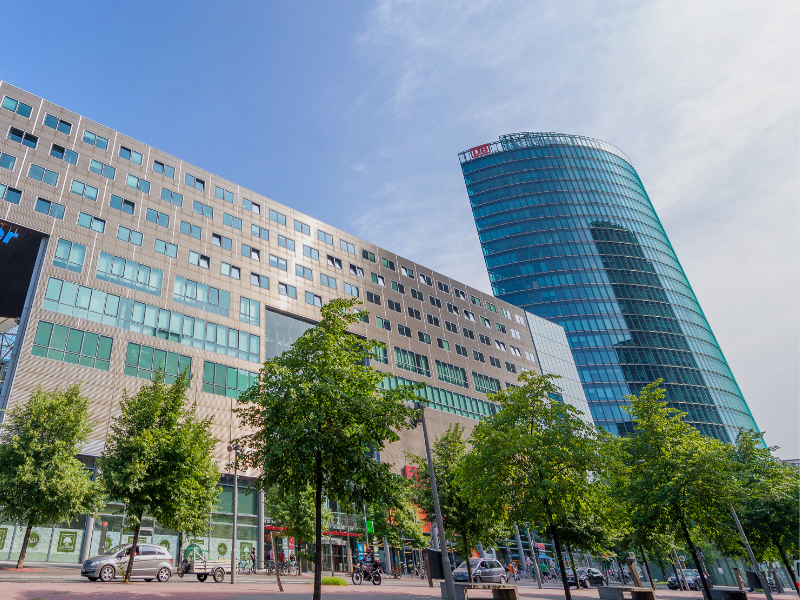
Potsdamer platz is a bustling square located in the heart of Berlin which represents the city’s spirit of change and revival. Its past goes back to the 19th century when it was known as a busy junction with luxurious hotels, theaters, and cafes. The Second World War resulted in massive devastation while the construction of the Berlin Wall turned it into an abandoned area between East and West Germany.
The fall of the wall in 1989 signified Potsdamer Platz’s new beginning; through extensive redevelopment projects that saw it become a symbol for Berlin’s resilience and innovation. Today there are modern buildings designed by famous architects like Helmut Jahn or Renzo Piano mixed with cultural institutions such as museums or galleries alongside bustling commercial centers reflecting continuous growths observed within Berlin over the years.
Among the must-see attractions found here are Sony Center –a futuristic complex hosting cinemas among other things– and Filmhaus Museum; Potsdamer Platz Arkaden –one Europe’s largest shopping malls– is also worth mentioning. In Kollhoff Tower visitors can enjoy breathtaking views over whole Berlin from Panoramapunkt observation deck while for contemporary art lovers Daimler Art Collection would be their best bet. Besides these permanent establishments, there’re seasonal events too like Christmas market or Berlinale film festival that further enhance vibrancy around this square throughout each year.
Berlin Television Tower
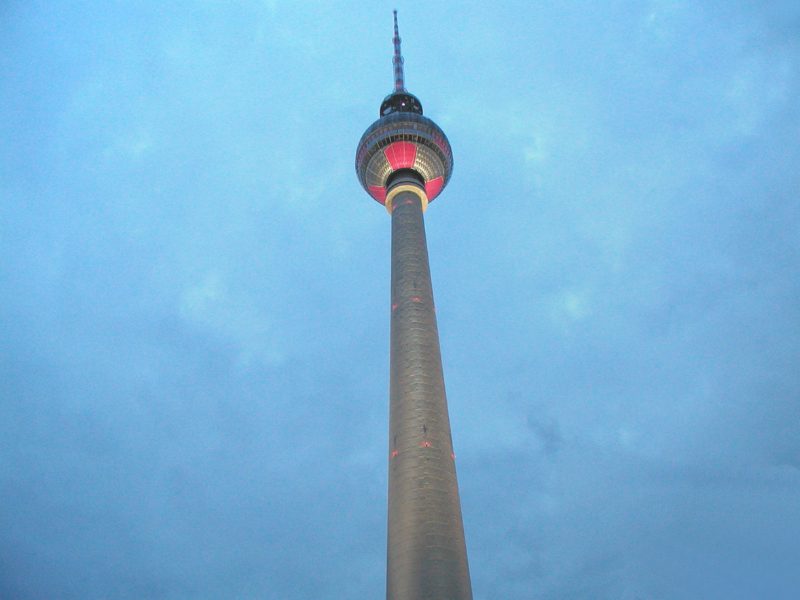
Towering 368 meters over Berlin is the Fernsehturm, or Berlin Television Tower, which has become a symbol of the city’s skyline. Built in the 1960s at the height of the Cold War era, this tower represents an important stage in Berlin’s historical and architectural development. It was commissioned by the East German government between 1965 and 1969 as a demonstration of their technological prowess and modernity.
The architect Hermann Henselmann led a team that designed it to be not only tall but emblematic — something that could serve as a prominent landmark for what they called their socialist state power and progress. Once the wall fell in 1989, however, it became clear that such symbols needed to change; thus today we see it also serving as an icon of reunification cherished by all Berliners.
This sleek steel-clad cylinder is a masterpiece of modernist architecture. At 203m there is an observation deck with views stretching out across all parts of berlin taking in such sights as Brandenburg Gate or even The Cathedral Church Of Saint Peter In Berlin (Berliner Dom). It revolves around its own axis within this structure, providing visitors with ever-changing views from different angles – especially when combined with dining options like Sphere restaurant situated only three meters higher up at two hundred seven meter elevation where you can eat while enjoying constantly shifting cityscape beneath your feet during both day time hours as well nights too; supplemented by interactive displays on history & landmarks throughout.
Kaiser Wilhelm Memorial Church
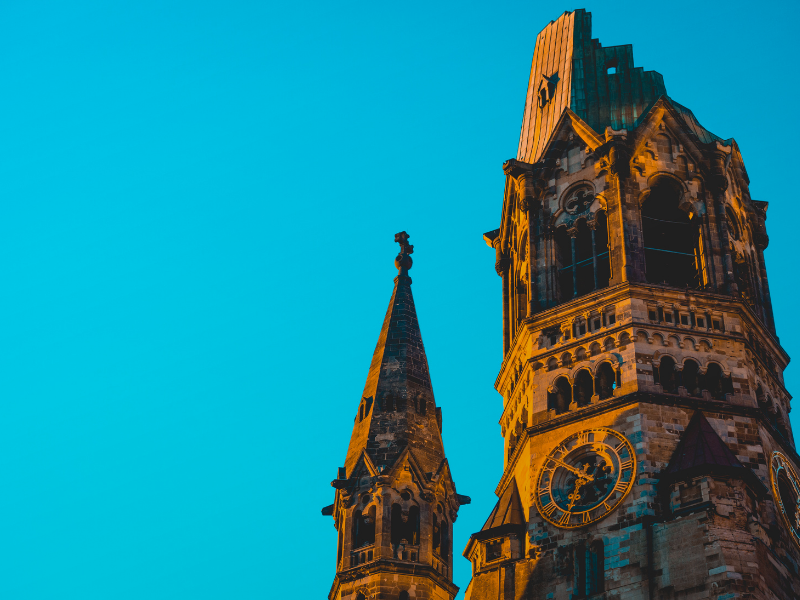
The Gedächtniskirche, also called the Kaiser Wilhelm Memorial Church, represents an important part of Berlin’s history through its destruction and reconstruction. Standing on the busy Kurfürstendamm boulevard, this site is considered both a place for peace and reconciliation among nations and a testament to war’s devastating impact. Between 1891 and 1895, neo-Romanesque architect Franz Schwechten built what was then known as the Kaiser Wilhelm Gedächtniskirche in honor of Kaiser Wilhelm I; it had elaborate decorations such as mosaics that covered walls from floor to ceiling or statues carved into every corner making this original version one Berlin’s biggest symbols representing imperial power.
In 1943 during World War II there was an air raid over Berlin which caused severe damage mainly destroying everything except for some parts like top spire and main hall. The decision not to demolish these remains but instead leave them standing as ruins was made deliberately so people could see what happens when they start fighting each other and never stop thinking about how much they want peace again.
In 1950s Egon Eiermann constructed new church buildings around old ruin parts creating hexagonal church with octagonal tower where blue glass windows shine at night offering more beautiful view over city than any other building nearby does. At bottom broken spire stands Memorial Hall displaying photographs, documents connected with history of church itself or Second World War – it is place where visitors should find themselves thinking quietly over past events ensuring they will never be forgotten.
Jewish Museum Berlin
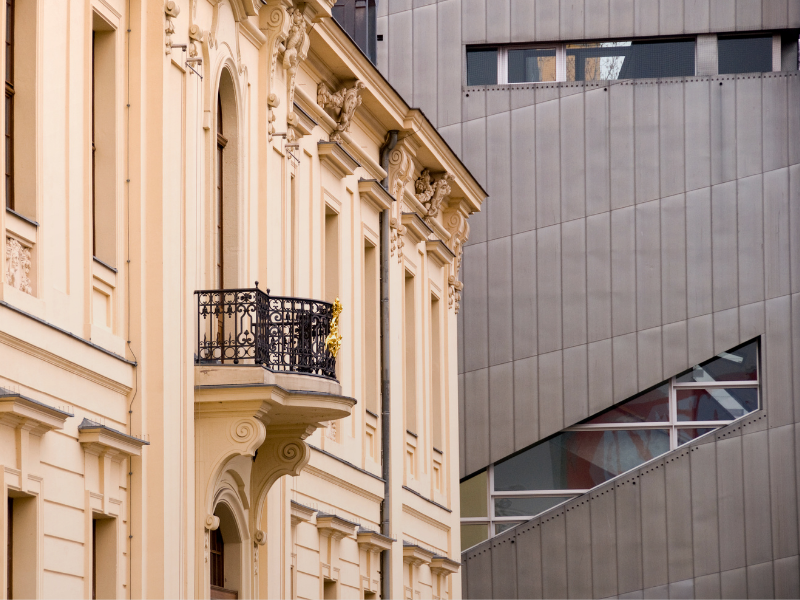
The Jewish Museum Berlin is among Europe’s most important cultural establishments. It offers an immersive examination of Jewish history, culture and identity. Situated in the Kreuzberg district of Berlin, its dramatic architectural design and extensive exhibits reflect the vibrancy and diversity of Jewish life.
The establishment was created during the late 1970s and opened its doors to the public in 2001 with the aim of preserving, researching and presenting German-Jewish history from the Middle Ages until today. The famous architect Daniel Libeskind designed this building which features a zigzag shape that represents divisions within Judaism as well as holes representing places where things have been lost including people’s lives during WWII when over six million Jews were killed by Nazis led by Adolf Hitler.
Different periods are covered by displays ranging from medieval times up until our own era: Enlightenment & Emancipation period; 19th-20th centuries – all around WWI but also including WWII; The Holocaust itself followed by what happened afterwards such as new beginnings after world war II etcetera.. In addition to these permanent exhibitions there are always some temporary ones going on too along with interactive media installations so you can get more out of your visit. Several parts stand out for their design like Garden Of Exile or Holocaust Tower which both address complex emotions well connected through emptiness running throughout this place (void spaces).
DDR Museum
Situated on the banks of the River Spree next to Museum Island in Berlin, the DDR Museum provides an absorbing insight into life in East Germany (GDR). The museum was founded in 2006 and takes visitors on a hands-on journey through the country’s history, culture and everyday life under communism. There are meticulous reconstructions to explore and interactive displays that bring various aspects of life behind the Iron Curtain to light – from living rooms to Trabant cars. Its aim is to present this unique cultural, social and political environment engagingly by focusing on personal stories and objects that reflect different facets of GDR life.
Among the key attractions at this museum are a Living Room Exhibit which recreates what a typical East German flat would have looked like; a Trabi car exhibit complete with simulated drive; Kitchen & Dining Area showing off some favourite dishes from those times. Additionally, there is Classroom Exhibit where you can see how education worked in the GDR; Work & Industry section illustrating planned economy as well as Stasi Surveillance exhibit which reveals just how much private space people had under constant watchfulness by secret police. You will find many multimedia displays here too that let visitors interact with history itself during their visit to former eastern bloc country such as Germany.
Hamburger Bahnhof
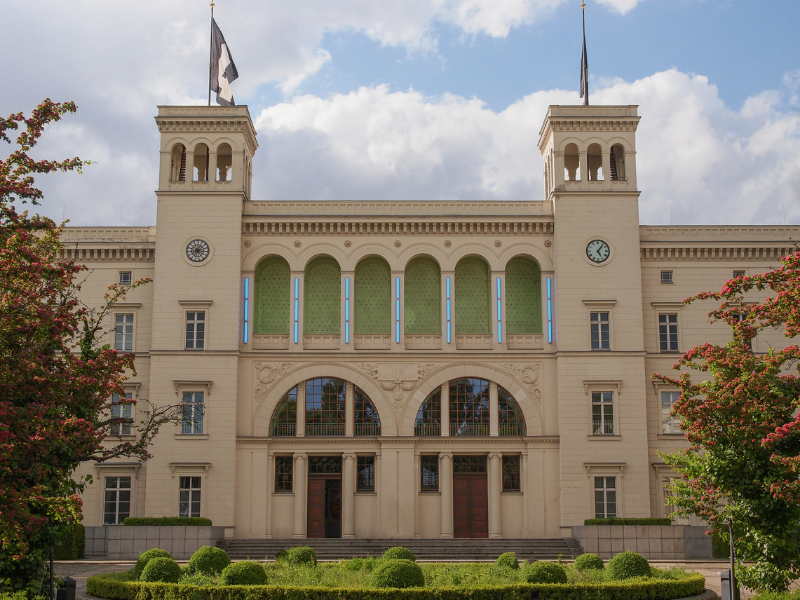
Berlin’s number one modern art gallery, the Hamburger Bahnhof is a living icon of the city’s dynamic arts scene and storied past. This museum, established in an old train station that combines historical architecture with contemporary design to create an inspiring environment for art lovers.
Built in 1846 as a terminal for the railway line from Berlin to Hamburg, it operated as such until 1884 before being converted into different things. In the early 1990s Josef Paul Kleihues oversaw its conversion into a museum of contemporary art while preserving some parts of this historic structure and adding new ones according to his own plan. It opened officially on November 2nd 1996 becoming one of most important venues for contemporary art in Germany.
The architectural features mix old and new: classical revival frontage acts as main entrance; spacious galleries boast high ceilings clad only minimally so as not distract from works displayed there within them which are all from XXI century; Friedrich Christian Flick Collection includes Marx Collection along with others belonging to Nationalgalerie showing Andy Warhol among other artists like Joseph Beuys or Gerhard Richter etcetera . Additionally temporary exhibitions can be visited here too where big installations take place due to huge spaces available at these halls.
Panoramapunkt
Potsdamer Platz’s Kollhoff Tower homes Panoramapunkt, which is one of the best places in Berlin to have a panoramic view. It gives you the chance to see all corners of the city’s skyline from its observation deck that surrounds it, including such famous landmarks as Brandenburg Gate or Reichstag Building and Berlin Cathedral or Fernsehturm (TV Tower).
The lively history of Potsdamer Platz can be traced back through this tower; before World War II, it was a thriving hub but later became an empty patch split by the Berlin wall until finally becoming a sign for unity and modernity after being rebuilt following German reunification. This historical context is provided by “Berlin in the 20th Century,” an exhibition on display at the observation deck — one of Europe’s fastest lifts will take you up there.
Panoramapunkt is truly unique because of its design – not only does it allow visitors to observe their surroundings comfortably from heights but also immerses them into what lies beneath with its open-air platforms. You can spend hours just gazing at different parts of town during sunset or night time when everything glows against dark skies – no wonder why this place has become so popular among tourists.
Museum of Photography
The Berlin Museum of Photography is a place that must be seen by anyone interested in photography or art. The museum, which is located near the Zoologischer Garten, contains many photographs, exhibits and archives that show the development of photography as an art form over time. This museum can be found in an old building from 1909 which was designed as a Landwehr officer’s casino.
Here you will find neoclassical architecture mixed together with contemporary exhibition spaces so that you can get inspired while exploring through different stages in history of cameras invention till nowdays digital era. If you have been fascinated with cameras since childhood this should be your best place to visit because they offer everything from early Daguerreotypes right up until current works produced using lasers.
A great part about this attraction is its dedication toward Helmut Newton; there are two floors filled with his fashion shots and portraits alone displayed at the Helmut Newton Foundation within the museum grounds also known as “S-Museum”. Alongside these images viewers will find personal objects belonging to him which give an idea into how he thought creatively. In addition temporary displays take place throughout year based upon themes related to all types of photography including historical moments captured on film.
Madame Tussauds
Madame Tussauds Berlin is an immersive experience where you can interact with life-sized wax figures of worldwide celebrities, historical rulers, sports legends and cultural icons. Situated close to the Brandenburg Gate, the museum incorporates classic wax sculpting with modern interactive exhibitions that let visitors get up close and personal with stars in ways they never dreamed possible — from posing for a picture next to Brad Pitt or Angelina Jolie, to taking part in political press conferences with Angela Merkel or Barack Obama. Its design is conceived around interactivity; each zone flows seamlessly into the other so there’s never any downtime between one amazing encounter after another – ensuring an unforgettable visit for all ages.
The Berlin branch – opened 2008 – gives this international institution some local flavour: alongside their global counterparts are also found German luminaries both past and present. There are themed areas which overflow into each other ensuring that anyone who walks through those doors will have a blast.
Natural History Museum
Situated at the center of Berlin, the Natural History Museum brings tourists through time and across nature. As a portion of Humboldt University since 1810, this institution has become one of the most important global establishments concerned with natural history where it represents a wide range of collections such as minerals that are difficult to find anywhere else on Earth besides dinosaur skeletons reaching into the sky. Apart from being an attraction open to public eyes, it also serves as a significant scientific center focused largely on paleontology, biodiversity or geology among others things; for instance, Guinness World Record holding Giraffatitan brancai can be found here along with interactive Biodiversity Wall or Evolution in Action display.
The neoclassical style building of the museum mixes old-fashioned architecture with contemporary exhibition spaces thus making it more splendid still. In addition to its permanent exhibitions, rotating special shows take place there while this institution always engages in innovative research projects which change over time. Practical services like café restaurant gift shop are offered by this museum so that visitors can enjoy their stay comfortably while accessible facilities enable easy passage for wheelchair users; moreover, people may find other interesting places around such as Hamburger Bahnhof or Berlin Wall Memorial which will provide them additional cultural encounters beyond what they have seen at NHM otherwise.



